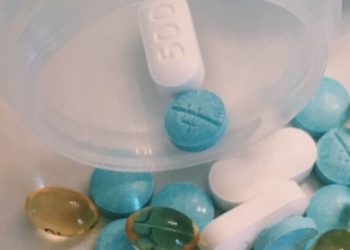Nonmedical prescription drug use associated with dating violence in adolescents
1. Nonmedical use of prescription drugs (NMUPD) was positively associated with increased sexual violence as well as a combination of sexual and physical violence in male adolescents.
2. In female adolescents, NMUPD was associated with only physical violence and with combined sexual and physical violence.
Evidence Rating Level: 4 (Below Average)
Study Rundown: Despite the current opioid crisis in the United States and the known association in adult populations between intimate partner violence and substance use, few studies have investigated the possible association between dating violence and NMUPD in adolescents. In this study, researchers conducted a cross-sectional study using previously collected data from a national survey and evaluated rates of both physical violence and sexual violence in the context of adolescent dating relationships and assessed their correlation with NMUPD. After accounting for a number of confounding variables, a positive association was discovered for males between NMUPD and only sexual violence, as well as between NMUPD and both physical and sexual violence, with increasing frequency of violence associated with increased frequency of NMUPD. Conversely, for females, NMUPD was associated with only physical violence and both sexual and physical violence. The study was limited by the lack of specificity regarding types of drugs used, as the questionnaire asked about global NMUPD, ranging from opioids to stimulants without differentiation. Still, clarifying this association between drug use and DV is important for providers to be aware of, given the known adverse health outcomes associated with both.
Click here to read the original article, published today in Pediatrics
Relevant Reading: Longitudinal Associations Between Teen Dating Violence Victimization and Adverse Health Outcomes
In-Depth [cross-sectional study]: In this study, researchers utilized data from the Centers for Disease Control and Preventions’ 2015 Youth Risk Behavior Survey, which included a representative sample of high school students across the United States. Ultimately, 10 443 students of various genders and races were included in the survey. Of those surveyed, 68.6% confirmed having dated within the last 12 months, with 50.8% of those confirming dating being male and 49.2% being female. Overall, males were less like than females to have experienced no dating violence (90.4% vs. 78.6%), while NMUPD was more common in males than females (21.3% vs. 18.5%). After accounting for demographic variables, researchers used logistic regression modeling to discern a positive association between only sexual dating violence and NMUPD (adjusted prevalence ratio [aPR] = 1.61; 95%CI: 1.21–2.12). After accounting for demographic and substance abuse variables, researchers were able to assess the singular association between dating violence and NMUPD. Sexual dating violence only (aPR = 1.61; 95%CI: 1.21–2.12) and a combination of both sexual and physical dating violence (aPR = 1.65; 95%CI: 1.26–2.17) were positively associated with NMUPD in males. For females, physical dating violence only (aPR = 1.42; 95%CI: 1.16–1.75) and a combination of sexual and physical dating violence (aPR = 1.43; 95%CI: 1.03–1.99) were positively correlated with NMUPD.
Image: CC/Flikr/Petra Benstad
©2017 2 Minute Medicine, Inc. All rights reserved. No works may be reproduced without expressed written consent from 2 Minute Medicine, Inc. Inquire about licensing here. No article should be construed as medical advice and is not intended as such by the authors or by 2 Minute Medicine, Inc.






